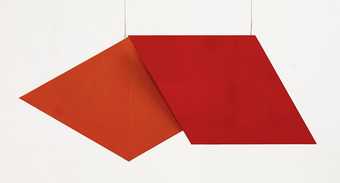Founded by the artists Gyula Kosice, Rhod Rothfuss and Carmelo Arden Quin, Arte Madí had a commitment to expressing the reality of modern life through non-figurative concrete art. In 1946 they published a manifesto in which they declared the importance of ‘the true constructive spirit which has spread though all countries and cultures’.
They were one of two artistic groups formed around the same time in Buenos Aires who pursued geometric abstraction – the other being the Asociación Arte Concreto-Invención. The style of Arte Madí was more playful and inventive than that of the Asociación Arte Concreto-Invención. They painted on irregular shaped canvases and experimented with three-dimensional objects.
They also published a journal, Arte Madí Universal that encouraged exchange with fellow abstract artists across the world. The group were to have an influence on the neo-concrete movement that emerged in Brazil in the 1950s.


